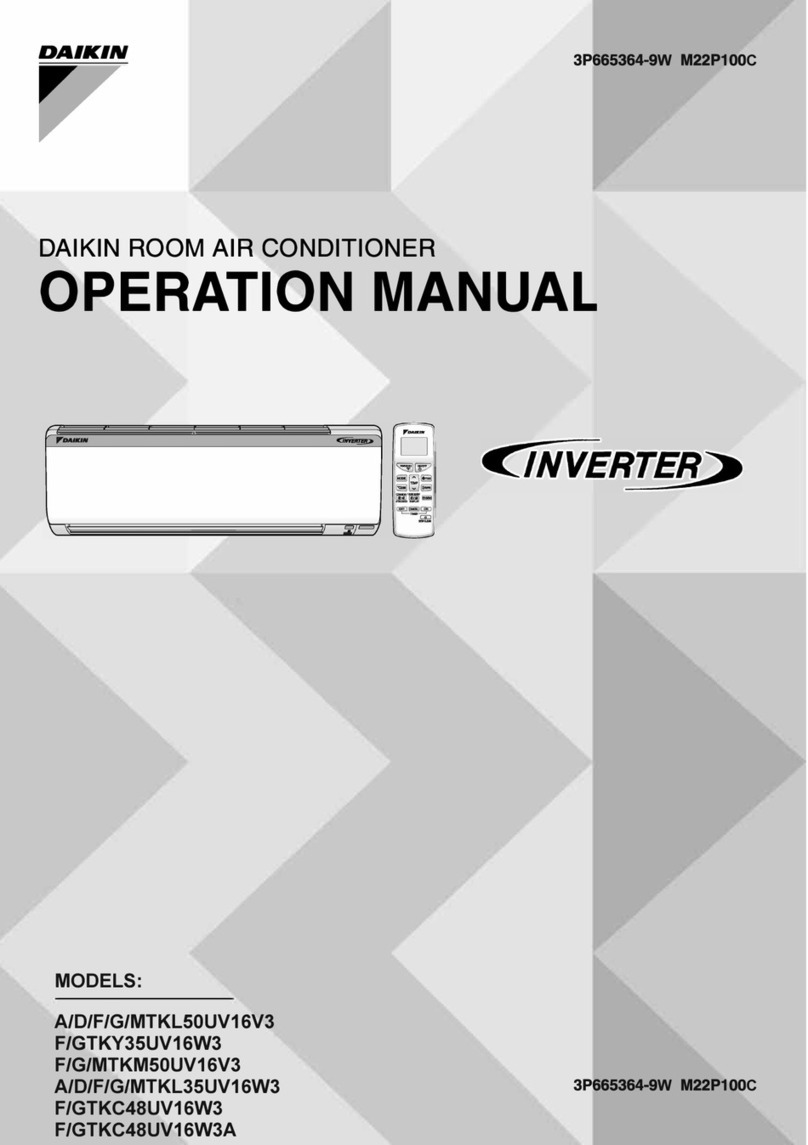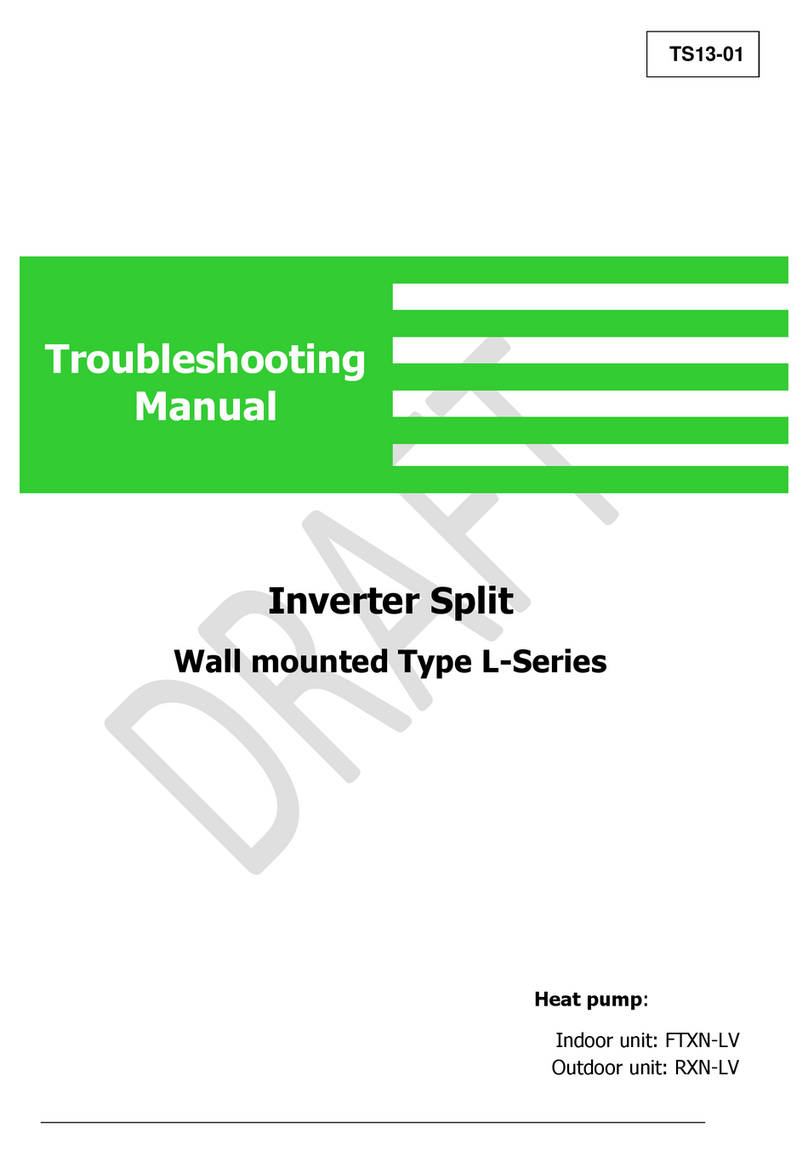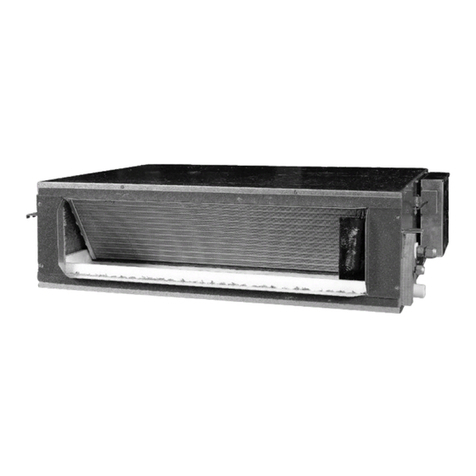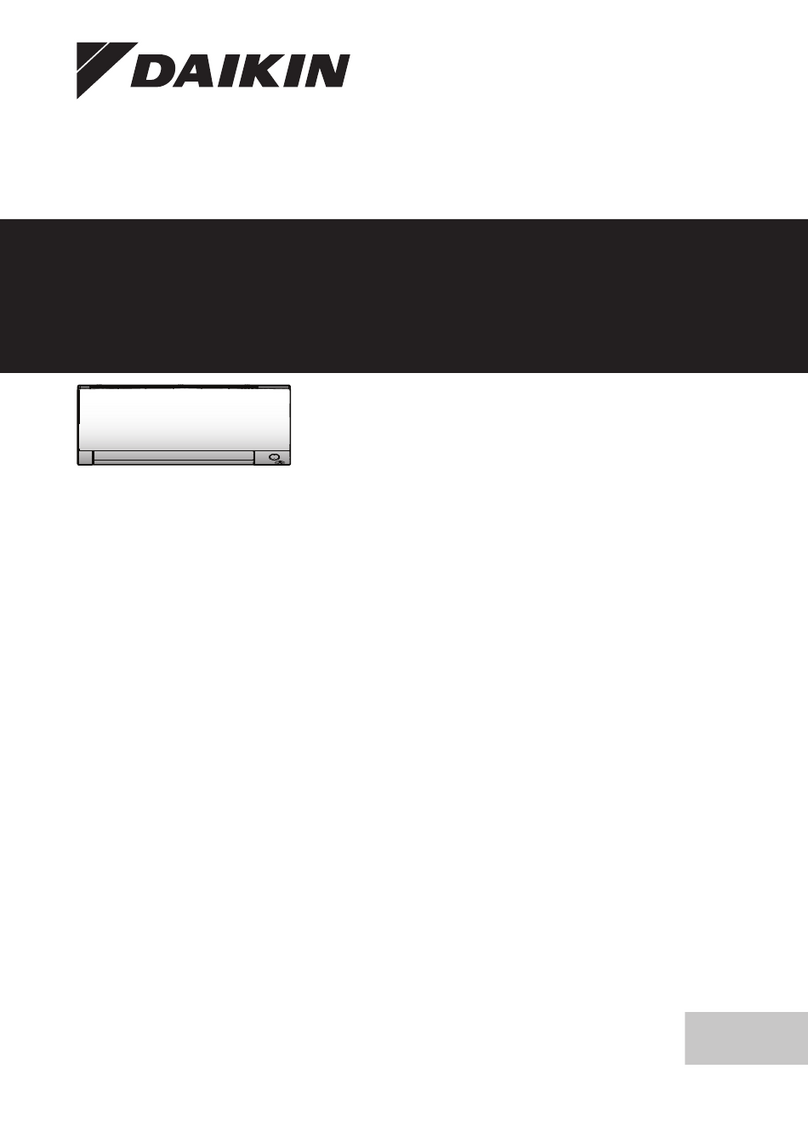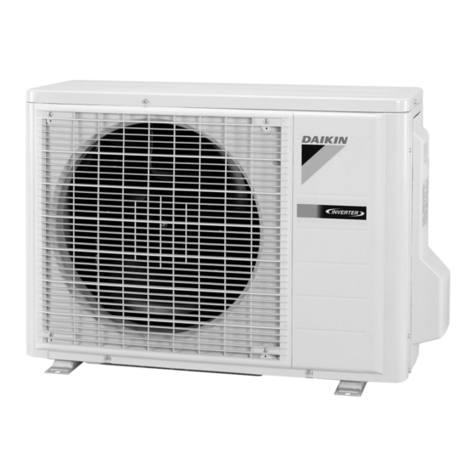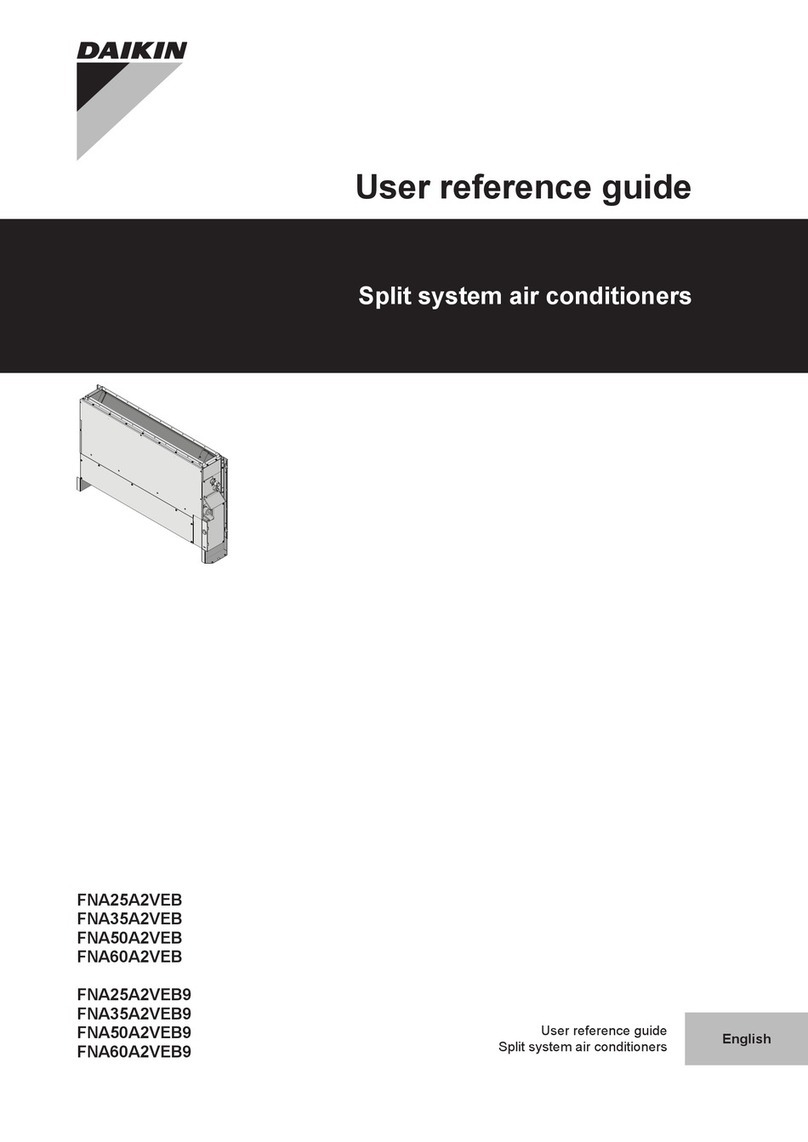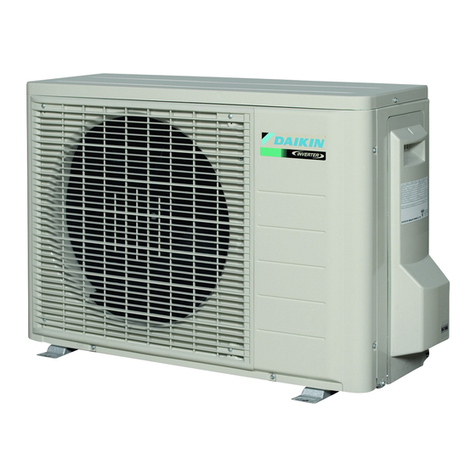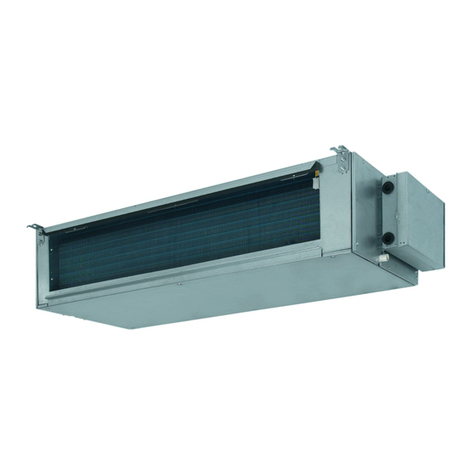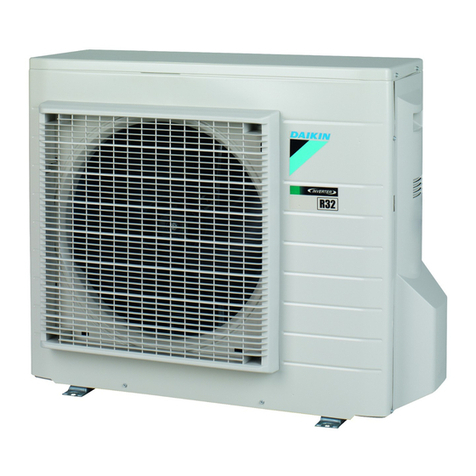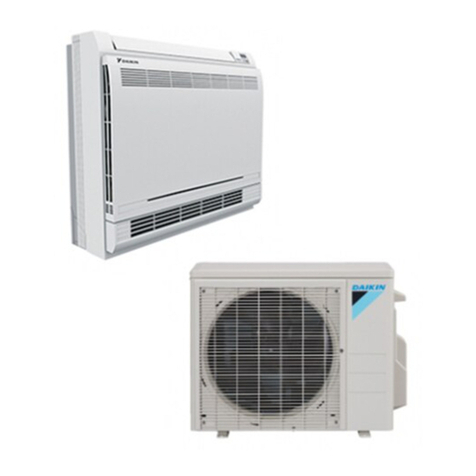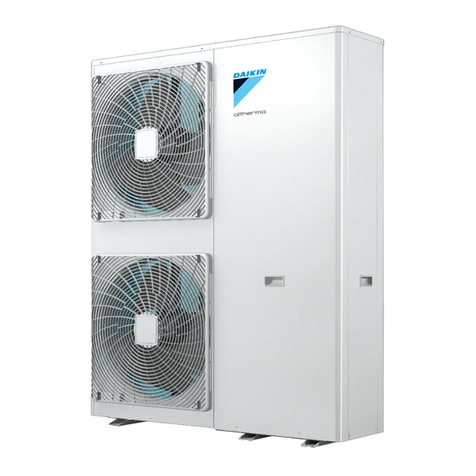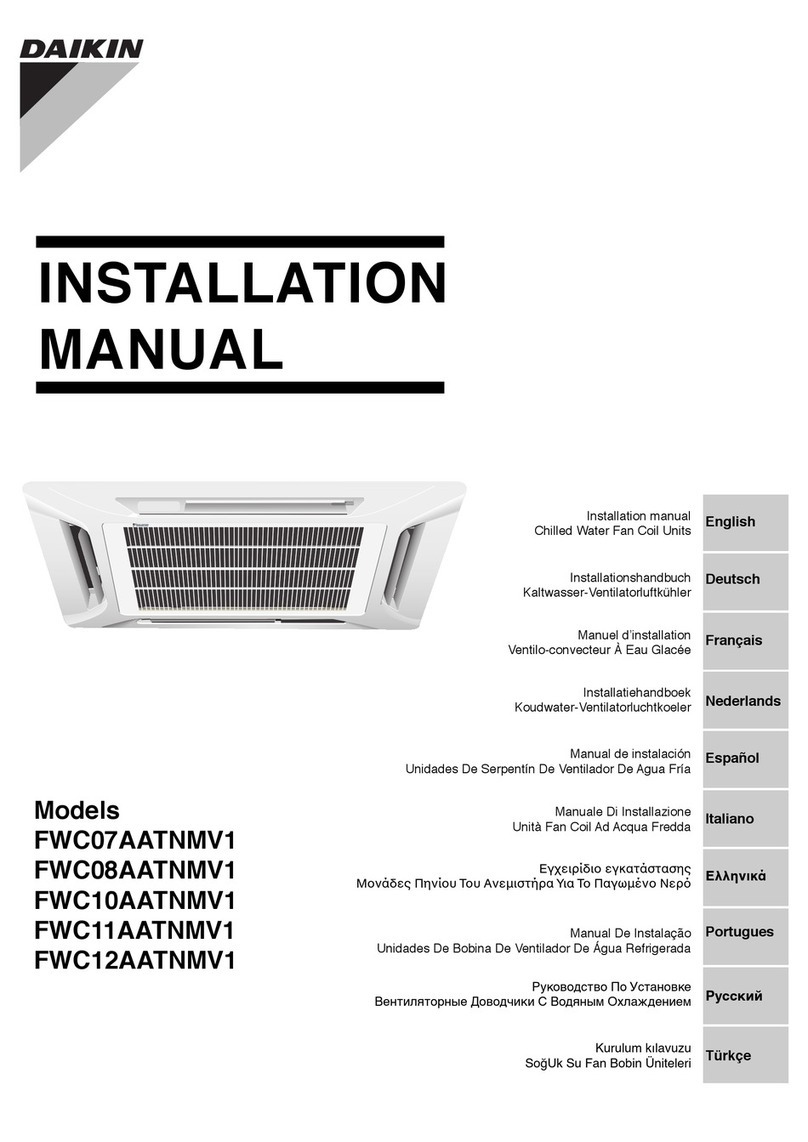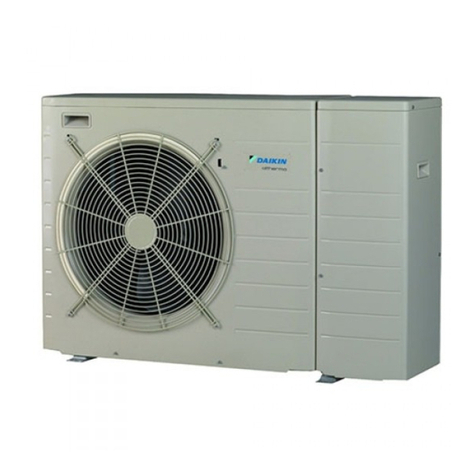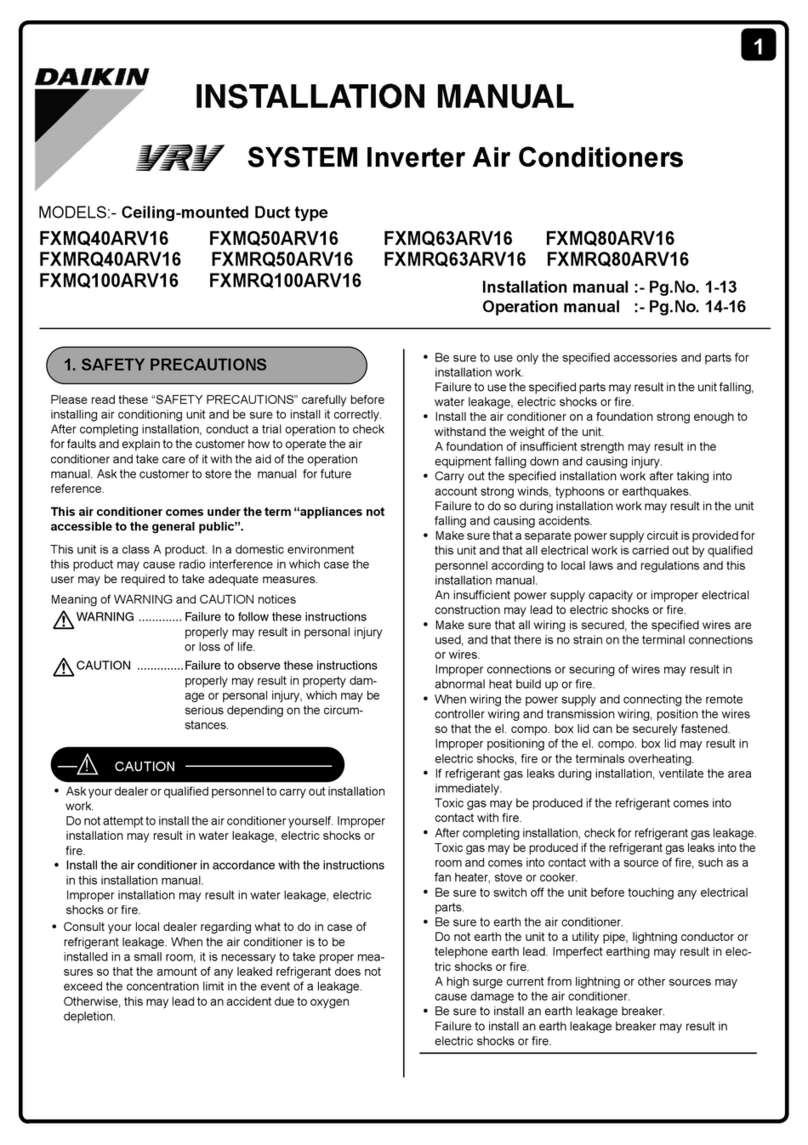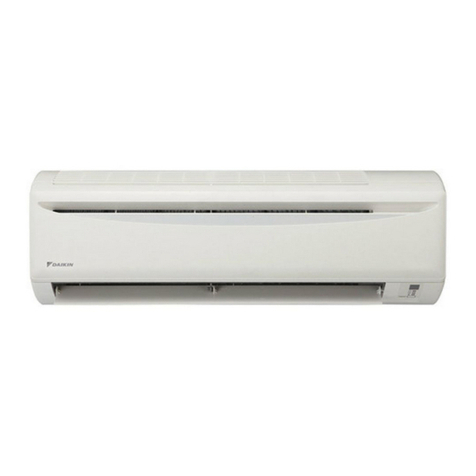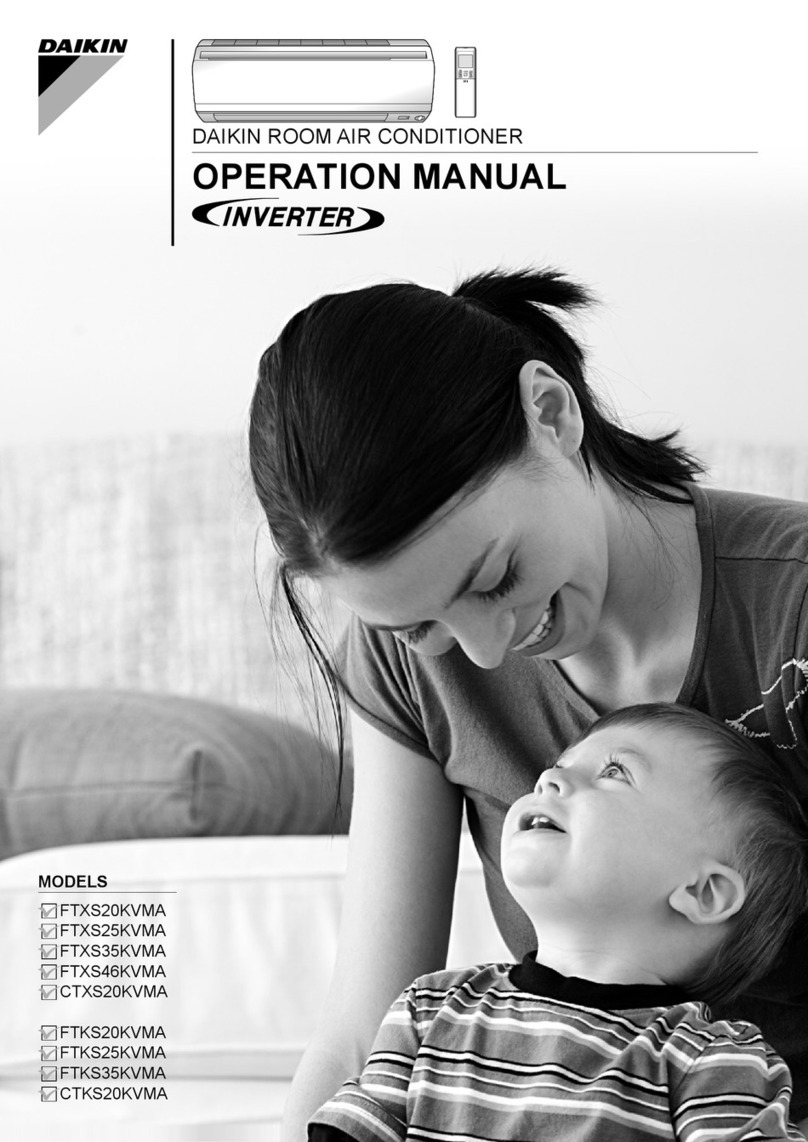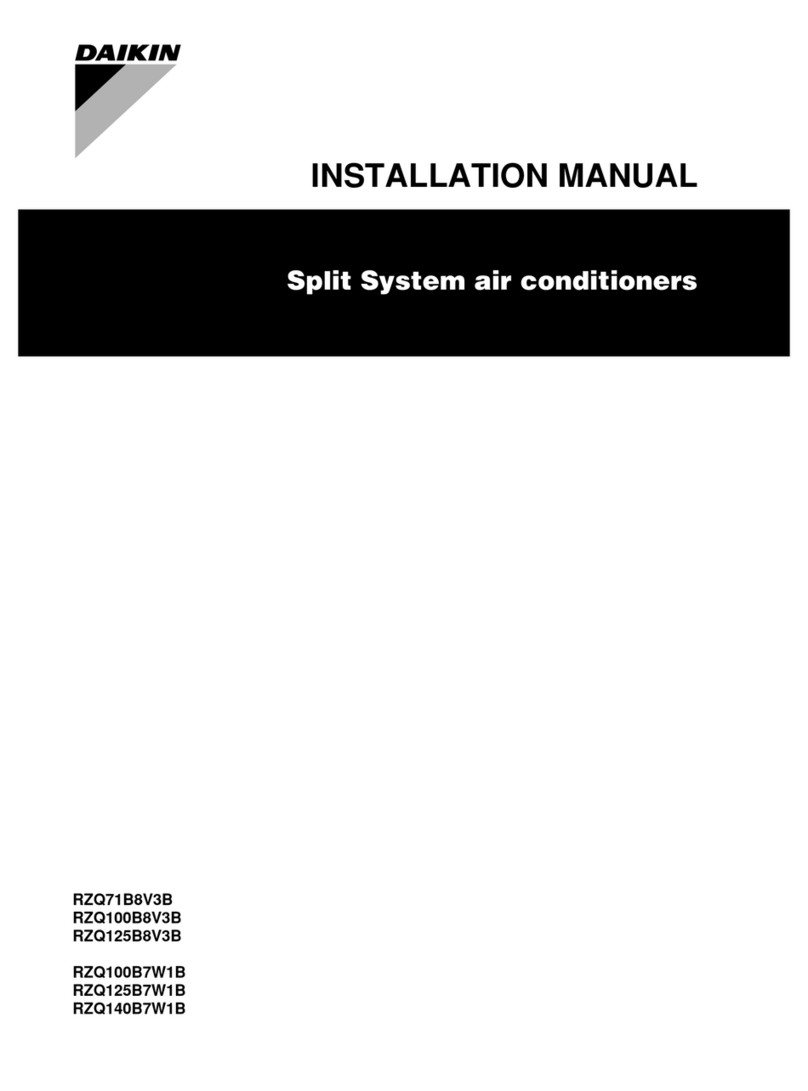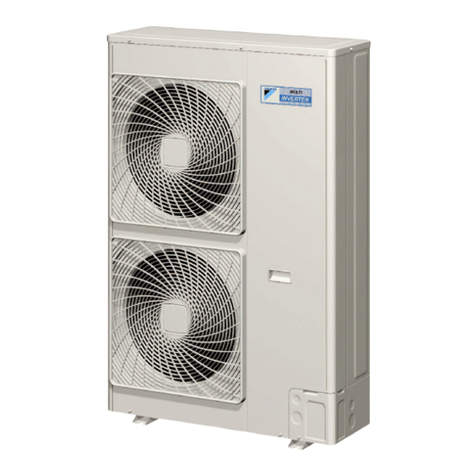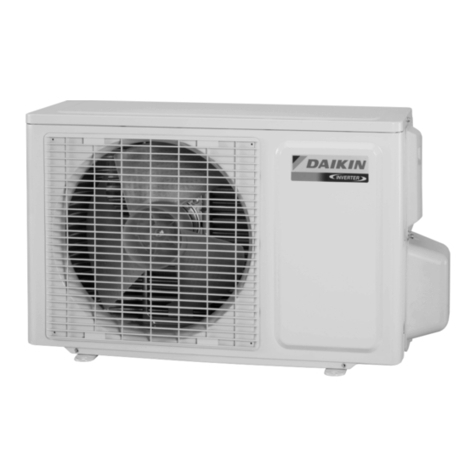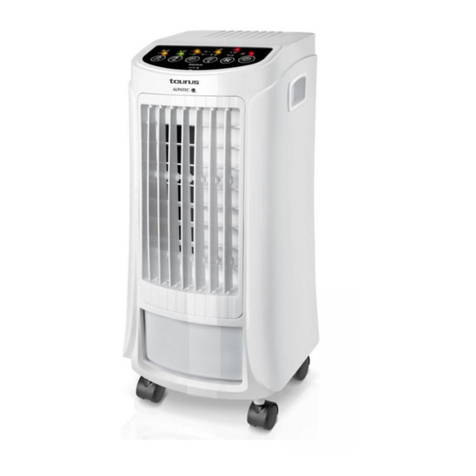
Table of contents
Operation manual
2
EBVZ16S18+23D
Daikin Altherma 3 R F
4P643606-1B – 2022.08
Table of contents
1 About this document 2
2 User safety instructions 3
2.1 General...................................................................................... 3
2.2 Instructions for safe operation ................................................... 4
3 About the system 4
3.1 Components in a typical system layout ..................................... 4
4 Quick guide 4
4.1 User permission level ................................................................ 4
4.2 Space heating/cooling ............................................................... 5
4.3 Domestic hot water.................................................................... 6
5 Operation 7
5.1 User interface: Overview ........................................................... 7
5.2 Menu structure: Overview user settings .................................... 8
5.3 Possible screens: Overview ...................................................... 9
5.3.1 Home screen............................................................... 9
5.3.2 Main menu screen ...................................................... 10
5.3.3 Setpoint screen ........................................................... 10
5.3.4 Detailed screen with values ........................................ 11
5.4 Turning operation ON or OFF ................................................... 11
5.4.1 Visual indication .......................................................... 11
5.4.2 To turn ON or OFF...................................................... 11
5.5 Reading out information ............................................................ 11
5.6 Space heating/cooling control ................................................... 12
5.6.1 Setting the space operation mode .............................. 12
5.6.2 To change the desired room temperature................... 12
5.6.3 To change the desired leaving water temperature...... 12
5.7 Domestic hot water control........................................................ 13
5.7.1 Reheat mode .............................................................. 13
5.7.2 Scheduled mode ......................................................... 13
5.7.3 Scheduled + reheat mode........................................... 13
5.7.4 Using DHW powerful operation................................... 13
5.8 Schedule screen: Example........................................................ 14
5.9 Weather-dependent curve......................................................... 15
5.9.1 What is a weather-dependent curve? ......................... 15
5.9.2 2-points curve ............................................................. 16
5.9.3 Slope-offset curve ....................................................... 16
5.9.4 Using weather-dependent curves ............................... 17
6 Energy saving tips 17
7 Maintenance and service 18
7.1 Overview: Maintenance and service ......................................... 18
8 Troubleshooting 18
8.1 To display the help text in case of a malfunction....................... 18
8.2 To check the malfunction history............................................... 18
8.3 Symptom: You are feeling too cold (hot) in your living room..... 19
8.4 Symptom: The water at the tap is too cold ................................ 19
8.5 Symptom: Heat pump failure..................................................... 19
8.6 Symptom: The system is making gurgling noises after
commissioning........................................................................... 19
9 Disposal 20
10 Glossary 20
11 Installer settings: Tables to be filled in by
installer 20
11.1 Configuration wizard.................................................................. 20
11.2 Settings menu ........................................................................... 20
1 About this document
INFORMATION
This unit is a heating only model. Therefore, all references
to cooling in this document are NOT applicable.
Thank you for purchasing this product. Please:
▪ Read the documentation carefully before operating the user
interface to ensure the best possible performance.
▪ Request the installer to inform you about the settings that he used
to configure your system. Check if he has filled in the installer
settings tables. If NOT, request him to do so.
▪ Keep the documentation for future reference.
Target audience
Endusers
Documentation set
This document is part of a documentation set. The complete set
consists of:
▪General safety precautions:
▪ Safety instructions that you must read before installing
▪ Format: Paper (in the box of the indoor unit)
▪Operation manual:
▪ Quick guide for basic usage
▪ Format: Paper (in the box of the indoor unit)
▪User reference guide:
▪ Detailed step-by-step instructions and background information
for basic and advanced usage
▪ Format: Digital files on https://www.daikin.eu. Use the search
function to find your model.
▪Installation manual – Outdoor unit:
▪ Installation instructions
▪ Format: Paper (in the box of the outdoor unit)
▪Installation manual – Indoor unit:
▪ Installation instructions
▪ Format: Paper (in the box of the indoor unit)
▪Installer reference guide:
▪ Preparation of the installation, good practices, reference
data,…
▪ Format: Digital files on https://www.daikin.eu. Use the search
function to find your model.
▪Addendum book for optional equipment:
▪ Additional info about how to install optional equipment
▪ Format: Paper (in the box of the indoor unit) + Digital files on
https://www.daikin.eu. Use the search function to find your
model.
Latest revisions of the supplied documentation may be available on
the regional Daikin website or via your installer.
The original documentation is written in English. All other languages
are translations.
